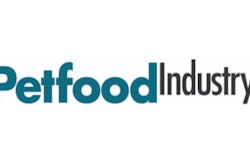
Small or new pet food companies often lack the resources to identify, research and develop novel pet food ingredients for themselves. These pet food companies must find the right ingredient suppliers and ask them the right questions to ensure their final products are safe, nutritious and palatable, said Ryan Yamka, PhD, of Luna Science and Nutrition at Petfood Forum 2017. He offered suggestions to help pet food professionals properly investigate a new ingredient before making a commitment to use it.
“If you have a vendor coming in, send them your list of questions ahead of time,” Yamka said. “Because, if you want to talk to the science guy, they’ll bring the science guy with them. If you want to talk to the guy that discovered it in his secret lab, they’ll bring him with them…This is by no means an exhaustive list [of questions], but it’ll get you going.”
Yamka divided his list of questions into three categories:
1. Regulatory and marketing questions for pet food suppliers
- Is it AAFCO/FDA approved and scientifically proven safe for use in species-specific pet food?
- Sometimes suppliers may be unaware that dogs, cats and other animals have different nutritional needs than people, noted Yamka. Also, suppliers may think that is an ingredient is approved for human use, it can also be used for pets. They may be unaware of pet food regulations.
- Is the ingredient natural, organic, sustainable and/or GMO-free?
- What is the base ingredient’s carrier?
- Yamka warned that if an ingredient is encapsulated in a corn, soy or other grain product, it will negate claims that the pet food is grain-free.
- What is the approved name?
- You might have a great idea for a new ingredient, but if it needs to be labeled with a long, technical name that can reduce clean label appeal, he said.
2. Supply chain and operations questions for pet food suppliers
- Do you have extrusion and retort data? How is it added to the product?
- If an ingredient will slow extrusion, you want to know about it and include that in your estimations, Yamka said. Does it go into the pre-conditioner, get injected or is it added to a pre-mix?
- Will it increase capital costs for new equipment?
- What’s ingredient availability? Is it seasonal?
- For example, blueberries need to be contracted years ahead of time since they are only harvested at one time of the year. If certain ingredients are produced in only one region, a natural disaster may wipe out the supply. Also, if demand for the ingredient increases, you need to be sure there will be enough of the novel pet food ingredient to meet your demand, he warned.
- How is it transported, stored and packaged?
- You want to know if the novel pet food ingredient comes in five-pound bags of powder or 50-gallon drums of liquid, he said, or if it need to be nitrogen flushed.
- What is the shelf-life?
- Do other markets compete for demand?
- Many ingredients are used in a variety of markets, such as rawhide for pet treat that is also used for leather, Yamka noted. If demand in other markets increases, prices may go up for a novel protein or other ingredient.
- Is there a volume procurement benefit?
- What is the inclusion rate and added formulation cost?
3. Research and development questions for pet food suppliers
- Will a pet food company need to run their own scientific studies of the ingredient?
- Even if a supplier provides research data, Yamka recommends that pet food companies run their own tests to be sure.
- Does it influence palatability or digestibility?
- Palatability is king, said Yamka. No matter how nutritious or on-trend a novel ingredient may be, if pets won’t eat it, consumers won’t buy it.
- Will it interact with other ingredients? Does it replace other ingredients?
- Does the supplier have multiple lots (typically five) of analytical data to support the ingredient’s specification?
Other concerns about novel pet food ingredients
Choosing the right ingredients and suppliers becomes critical, Yamka said, when one considers the repercussions of the melamine-related pet deaths and recalls of 2007 or the consumer outrage last year over fish harvested by slaves in Southeast Asia.
Ultimately, pet food industry professionals need to ask themselves why they are adding a new ingredient, concluded Yamka. For example, if that ingredient doesn’t meet natural or grain-free demands, then they may well be missing the boat on novel pet food ingredients.
Petfood Forum 2018
Petfood Forum 2017 was an exclusive event serving pet treat and pet food manufacturers. At Petfood Industry’s 25th Anniversary edition of Petfood Forum, attendees learned about the latest in pet food research and marketing from speakers including Randi Zuckerberg and Temple Grandin.
Petfood Forum 2018 will take place at the Kansas City Convention Center in Kansas City, Missouri, USA on April 23-25, 2018.


















